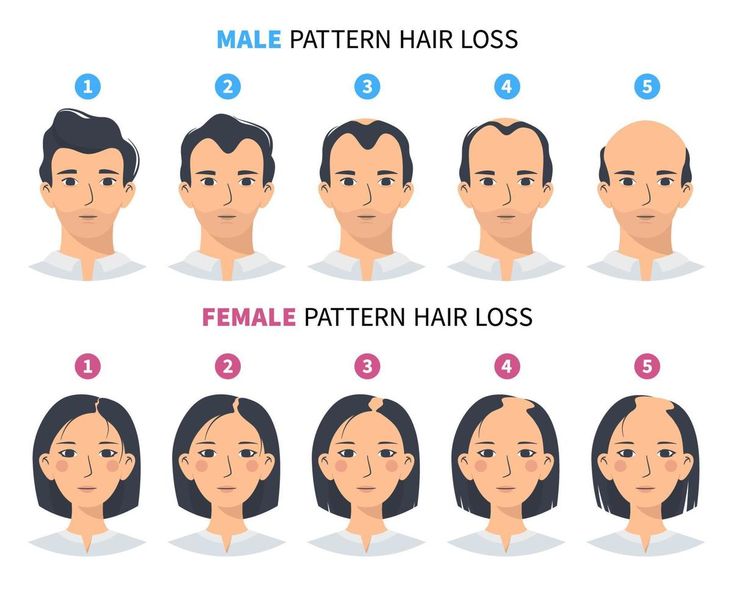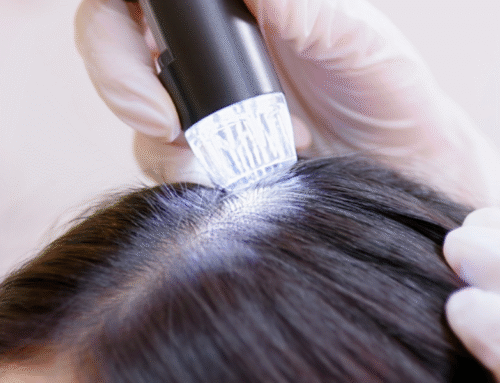One day, you look in the mirror and notice that your hair is falling out unusually. Some areas appear thinner, but you’re unsure whether it’s temporary or the start of a more serious hair condition. That’s when you ask yourself: Is it alopecia areata or androgenetic alopecia? Knowing the difference is key to finding the best treatment.
In this article, we’ll explain the main differences between these two conditions, their causes, and how to treat them naturally.
What Is Alopecia Areata?

Alopecia areata is an autoimmune condition in which the immune system mistakenly attacks hair follicles, causing hair loss in round or irregular patches. It can affect the scalp as well as other areas of the body, including the eyebrows, eyelashes, and beard.

Key Characteristics of Alopecia Areata:
- Sudden hair loss in round patches.
- Affects not only the scalp but also other areas of the body.
- No signs of inflammation or scarring on the scalp.
- Can be reversible, although in some cases, it becomes chronic.
Causes of Alopecia Areata
The exact cause of alopecia areata is not entirely clear, but it is known to be related to autoimmune and genetic factors. Some common triggers include:
- Intense physical or emotional stress.
- Autoimmune diseases such as lupus or type 1 diabetes.
- Genetic predisposition.
What is Androgenetic Alopecia?
Androgenetic alopecia, also known as male or female pattern baldness, is the most common form of hair loss. It is caused by genetic and hormonal factors, particularly the action of dihydrotestosterone (DHT), a hormone derived from testosterone.
Main Characteristics of Androgenetic Alopecia:
- Progressive and permanent hair loss in specific areas.
- In men: Affects the frontal hairline and crown.
- In women: Appears as generalized hair thinning.
- Miniaturized hair follicles, making hair thinner until it eventually disappears.
- Does not affect other areas of the body.
Causes of Androgenetic Alopecia
Androgenetic alopecia is primarily influenced by:
- Genetics: A family history of hair loss increases the risk.
- Hormones: DHT shortens the hair growth phase.
- Age: It can begin in youth and worsen over time.
Differences Between Alopecia Areata and Androgenetic Alopecia

Natural Treatments for Each Type of Alopecia
Personalized treatments based on medicinal plants can help naturally and effectively address both conditions.
Natural Treatment for Alopecia Areata
- Aloe Vera: Helps soothe inflammation and promotes follicle regeneration.
- Turmeric: A powerful anti-inflammatory that modulates the immune system.
- Rosemary Oil: Stimulates blood circulation and strengthens hair follicles.
- Nettle: Rich in essential minerals for hair growth.
Natural Treatment for Androgenetic Alopecia
- Serenoa repens (Saw Palmetto): Blocks DHT and prevents follicle miniaturization.
- Green Tea: Contains antioxidants that protect follicles from hormonal damage.
- Jojoba Oil: Regulates oil production and strengthens the hair cuticle.
- Biotin & Zinc: Nourish the scalp and promote healthy hair growth.
Conclusion
Distinguishing between alopecia areata and androgenetic alopecia is essential to finding the right treatment. If you notice unusual hair loss, observing the shedding patterns and related factors will help identify which type of alopecia you may be experiencing.
If you’re looking for an effective treatment, at HairWise we design personalized treatments using medicinal plants tailored to your scalp’s needs. Contact us for a personalized evaluation and discover the best solution for your type of alopecia.
Restore Your Hair’s Health Naturally!
📧 hello@wearehairwise.com
📞 3057998276
🌐 wearehairwise.com
📍 245 SE 1st Street, Suite 201, Miami FL 33131





